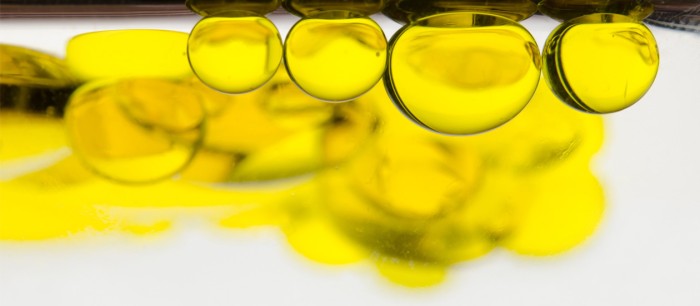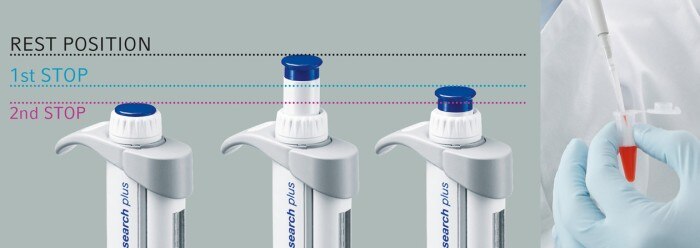메뉴
KR | KRW
다음으로 로그인됨:
KR | KRW

Save time by knowing your samples’ properties
실험실 아카데미
- 디스펜서
- 피펫
- Liquid Handling 워크스테이션
- 피펫팅 및 분주
- 효율성
- 재현성
- 점도 및 액체 유형
Time-saving protocols and methods are favored in daily lab life. Each of us tries to be as efficient as possible. We intersperse experiments to get the most out of the day. This practice can be useful with easy experiments and routine tasks but when it comes to new or challenging applications, it takes time to gain experience and speed. Good results are often a matter of time and a lack of time leads to mistakes. Sometimes the liquids used slow the process down because they have liquid properties other than water. These challenging liquids can lead to imprecise pipetting quantities if not handled with the necessary care and thus influence results significantly.
When using classic pipettes, the air cushion between the sample and the instrument’s piston is prone to change. It can be compressed or elongated depending on the liquid aspirated into the pipette tip.
Let us have a closer look at 86 % glycerol for example. A pipette tip is attached to a single-channel pipette. When glycerol is aspirated, it flows slowly into the tip. When dispensing, the liquid also flows slowly and residues which cannot be dispensed remain in the tip. Therefore, much time is needed to handle the liquid and imprecise results are still the outcome when the correct pipetting technique is not used. If we imagine upscaling to using multi-channel pipettes, difficulties multiply by 8 or 12. And when using a pipettor with 96 channels? You can imagine that it gets difficult to handle the liquid in each of the 96 channels without the correct pipetting technique.
When pipetting glycerol, we recommend reverse pipetting. With this technique, the blow-out volume, which is usually air, is aspirated as well. Therefore, the control button must be pushed to the lowest position and then released when aspirating glycerol (figure 1). When dispensing it, the control button is only pushed down to the first stop and the rest in the tip is discarded. Like this, the exact set volume of glycerol can be dispensed with classic air-cushion pipettes. You can save time and stress by knowing your liquid and its behavior when pipetting.
We recommend that you should know your liquid and its properties. We can give handling recommendations for each liquid class, no matter if you are using single-, or multi-channel classic pipettes, dispensers or 96-channel pipettors. Handling challenging liquids can be manageable and time-saving if you use the correct pipetting technique. Download our poster on pipetting techniques with classic air-cushion pipettes. It gives background information and tips on handling different liquid types. Alternatively, read our White Paper 039: How to handle difficult liquids with epMotion® 96 and epMotion 96 xl to receive information on handling challenging liquids with 96-channel pipettors.
Let us have a closer look at 86 % glycerol for example. A pipette tip is attached to a single-channel pipette. When glycerol is aspirated, it flows slowly into the tip. When dispensing, the liquid also flows slowly and residues which cannot be dispensed remain in the tip. Therefore, much time is needed to handle the liquid and imprecise results are still the outcome when the correct pipetting technique is not used. If we imagine upscaling to using multi-channel pipettes, difficulties multiply by 8 or 12. And when using a pipettor with 96 channels? You can imagine that it gets difficult to handle the liquid in each of the 96 channels without the correct pipetting technique.
When pipetting glycerol, we recommend reverse pipetting. With this technique, the blow-out volume, which is usually air, is aspirated as well. Therefore, the control button must be pushed to the lowest position and then released when aspirating glycerol (figure 1). When dispensing it, the control button is only pushed down to the first stop and the rest in the tip is discarded. Like this, the exact set volume of glycerol can be dispensed with classic air-cushion pipettes. You can save time and stress by knowing your liquid and its behavior when pipetting.
We recommend that you should know your liquid and its properties. We can give handling recommendations for each liquid class, no matter if you are using single-, or multi-channel classic pipettes, dispensers or 96-channel pipettors. Handling challenging liquids can be manageable and time-saving if you use the correct pipetting technique. Download our poster on pipetting techniques with classic air-cushion pipettes. It gives background information and tips on handling different liquid types. Alternatively, read our White Paper 039: How to handle difficult liquids with epMotion® 96 and epMotion 96 xl to receive information on handling challenging liquids with 96-channel pipettors.
자세히 보기
간단히 보기


